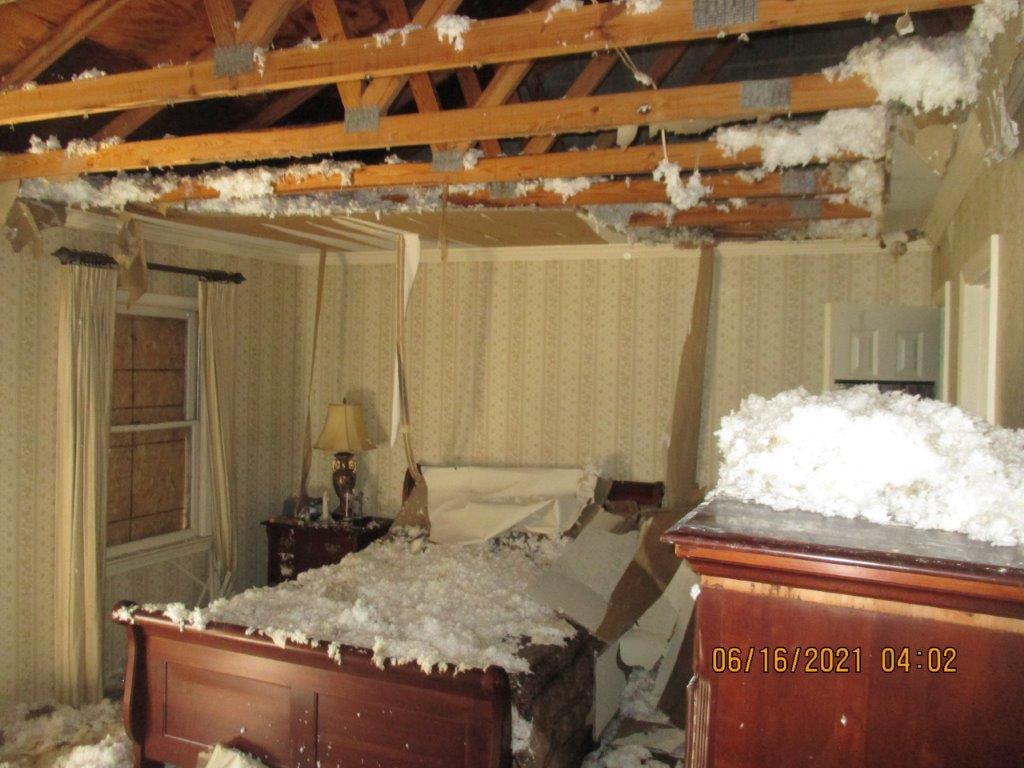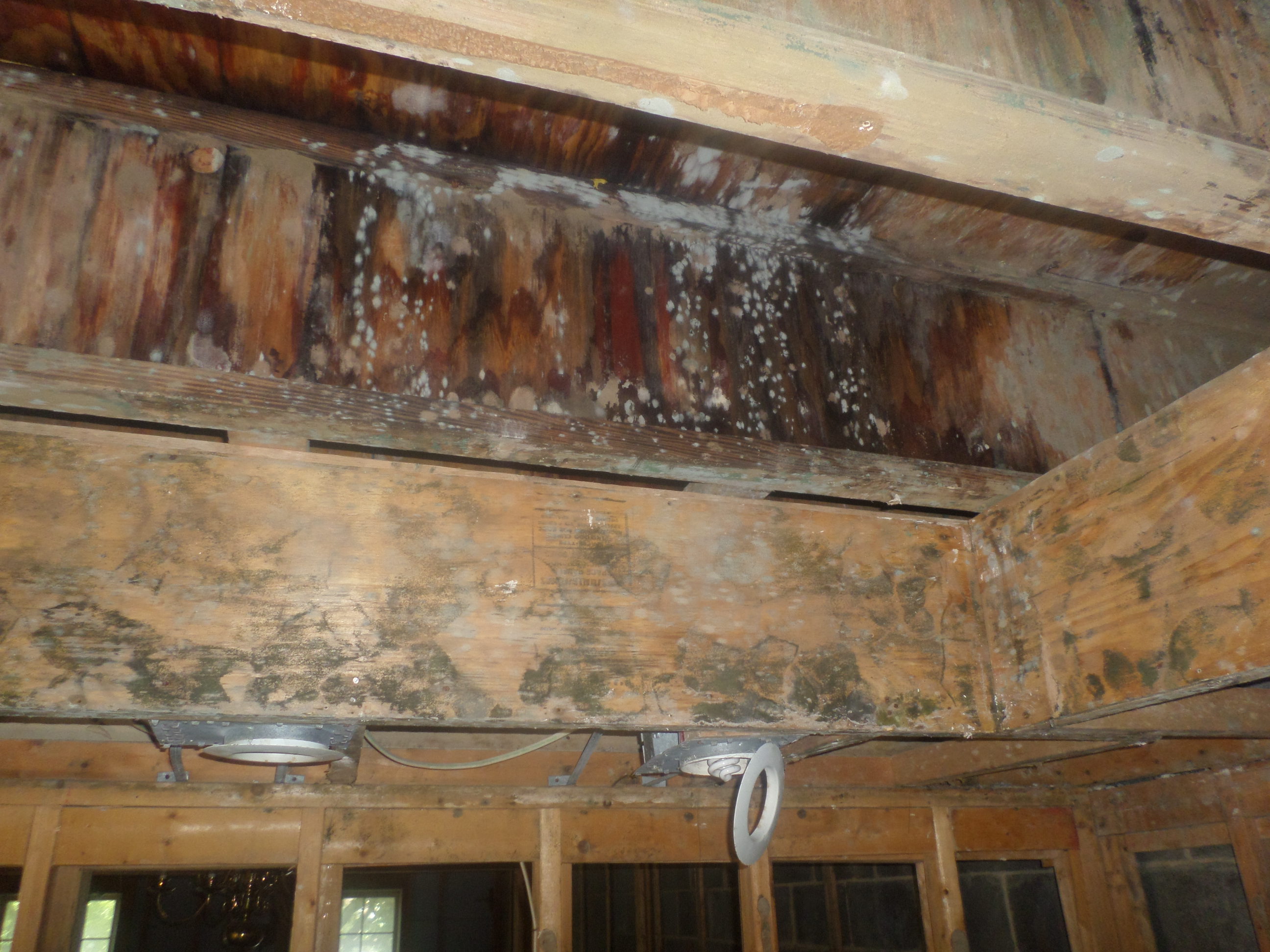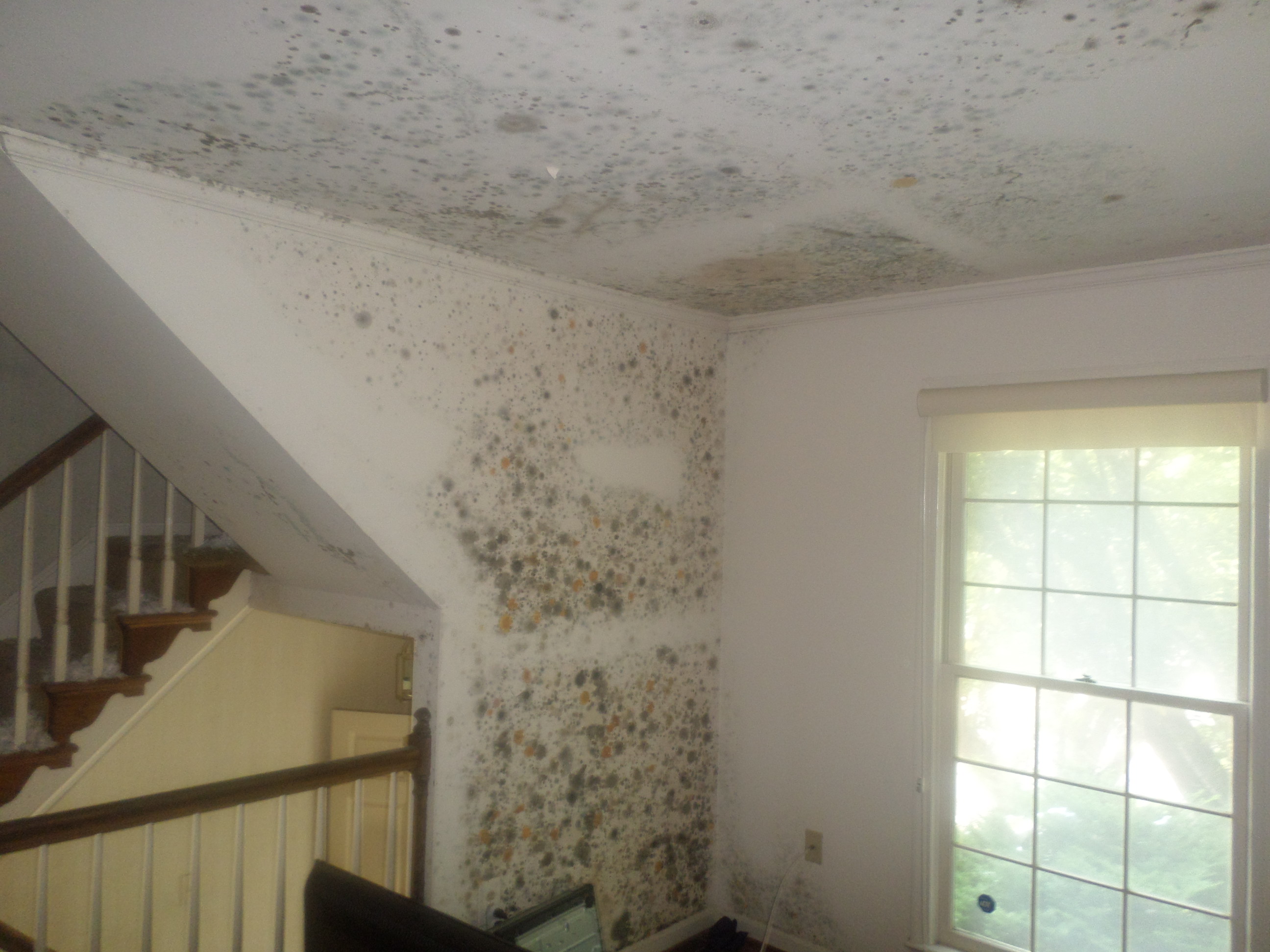Case Study – Mold damage and remediation after a fire in Alexandria
No two fires are identical but certain similarities suggest the damaging effects from the fire can often be called ‘typical’. We encountered a non-typical fire scenario in a townhouse in Alexandria, VA earlier this year.
How did this fire start?
First, this fire occurred due to a plumber’s negligence while working in a third-floor bathroom. Using a propane torch to sweat a copper plumbing pipe joint, the areas on the opposite side of the wall he was working on became so hot combustion occurred. By the time the plumber realized the home was on fire all he could do was get himself and the homeowner safely out of the house. The firemen were able to put out the fire but because this was a middle unit townhouse (adjoining homes on both sides), a third (top) floor, very intense, very hot fire they used a lot of water. They even pulled the top floor ceilings down and sprayed water into the attic.

In fire, as in the laws of physics, heat (hot smoke) rises. Water used for fire suppression seeks its level, which can only occur when it pools or collects. In other words, the smoke stayed on the top floor and attic but the water rained down throughout the lower 2 floors until reaching the basement, where it was able to collect. These are fairly common occurrences of fires that occur on upper levels and are put out by water.
Who is at fault for the fire?
So why is this interesting? Property damage that occurs due to someone else’s negligence, including malfunctioning of a manufacturer’s product, is a liability issue with the person or company at fault. In other words, the property owner’s insurance company will hold the business that the individual works for, or the manufacturer of the product that failed, financially responsible for the damage. This legal matter where one party is attempting to collect damages from the other is called subrogation. In order for subrogation to take place both parties must agree on what exactly happened and why. This is determined by fire investigators from both parties who gather evidence, photographs and interviews of all parties involved. The industry term for this is called a cause and origin investigation.
The second thing that is interesting is that until both parties agree on who or what is responsible for the fire, the scene of the fire and in some cases the entire building are considered to be off limits to anyone other than the investigators. When agreements cannot be reached in a timely manner, the property can sit in the condition it is left in by the fire department for days, weeks and sometimes months before any work can be started to correct the damage. Which bring us back to the townhouse fire.

How did we handle the restoration project?
As I mentioned earlier, this started out as a pack out of salvageable personal property. The fire happened in early June. Due to the ongoing investigation, we were not permitted to remove anything from the house until mid-June. This permission was however limited, allowing us to work in any of the rooms in the house except the rooms where the plumbing was performed and the room behind it where the fire broke out. By that time bacteria had started to grow on saturated building materials.
Projects such as these should be performed in a sequence of events.
- Contents removal either by pack out or by disposal is first.
- Building mitigation or stabilization should take place after content removal, the manipulation of contents within the building while trying to remove wet ceilings, flooring and walls would pose a threat to the safe recovery of restorable contents.
- Likewise, source removal procedures which should follow stabilization, either by demolition or processes that involve the use of abrasives would also subject the contents to additional risks.
- Deodorization, perhaps the most critical procedure following a fire, would be difficult to arrive at conclusions if addressed contents that may emit fire residue odors are present.
The inability to move form one phase to the next in a timely manner can create major complications as this scenario did.
Due to the amount of water used to suppress the fire, it was unsafe to restore electricity, which is most always shut off by the Fire Department. Recovering any items of personal property that may be salvageable and thorough documentation of property that cannot be restored also takes priority over demolition.
In a severe fire most if not all of the furniture are total losses however, there may be photo albums, important papers, family heirlooms and other one-of-a-kind sentimental items that may be of great importance to the property owner. It takes time to complete this process to the point the owner is satisfied that everything salvageable is recovered and everything that was not has been identified and documented for insurance re-imbursement purposes.
Inventorying of non-salvageable property
The inventory and pricing of non-salvageable property can be performed by the insurance adjuster, an independent firm, or by Restortech. Once the list has been approved by the insurance company and the homeowner, we ask the property owner to give us signed permission to dispose of the non-salvageable property. This may also take a few days depending on the quantity of items, availability of a receptacle or numerous trips to the landfill using a trash hauling truck.
Mold Growth because of Delay on Fire Damage Restoration
Due to delays by the investigation and getting the responsible party to agree to the liability, the contents documentation and removal, nearly 100% of the drywall had developed substantial mold growth. Remember, this was Summer in Alexandria, VA where daytime temperatures and humidity both can reach the triple digits. Also remember, there was no power which meant no environmental controls (air conditioning). A perfect recipe for mold to grow and proliferate.

The home now vacated of personal effects was ready for stabilization. Mitigation is a term used when the object is to lessen the impact of the damage resulting from the incident. When the impact is so great that none of the interior finishes (walls, ceiling, flooring, windows, doors, cabinetry, electrical systems and components, etc.) can be reused following some form or restoration, removal and disposal is the only viable and economically feasible alternative. This process is referred to as stabilization.
For several hot days in July, we removed all of the interior finishes as the home was basically taken down to only wood framing and masonry. All of the electrical system and HVAC system were completely saturated with water and could not safely be reused. Temporary power was obtained by replacing the breaker panel and adding several GFI outlets. This ‘quick fix’ for returning electricity to the building allowed us to use drying equipment, though still no air conditioning, so that the saturated wood framing and masonry could be brought back to acceptable moisture levels.
Soda Blasting to Remove Layers of Contamination
Once the house was dry, we could begin the mold remediation/decontamination. We chose to use a process called soda blasting to remove a small layer of contaminated wood. The sodium bicarbonate is propelled at sufficient velocity so as to literally shave off the outer layer to a depth that no mold, or smoke, stains were visible. Now the house was ready to turn over to the reconstruction company to begin the rebuild.

The RestorTech Outcome
This job was also interesting because we utilized every service the company provides on a single job; pack out, inventory, removal and disposal of non-salvageable personal property, cleaning and deodorization of restorable personal property including some textiles, structural demolition, structural drying, decontamination and cleaning, soda blasting deodorization and on-site climate-controlled storage of the restored personal property. We will also deliver the household goods once the reconstruction is completed.
What started as a relatively small fire in a closet turned into major water loss which, because of legal delays, turned into a catastrophic mold scene. One could argue that had there not been a liable 3rd party involved and if there was no right of subrogation, the water damage could have been addressed promptly. The fire damage actually caused very little damage and was confined to the third floor. The water destroyed much of the furniture and building finishes but we feel the mold damage could have been prevented if we were allowed free access to the property from the start.